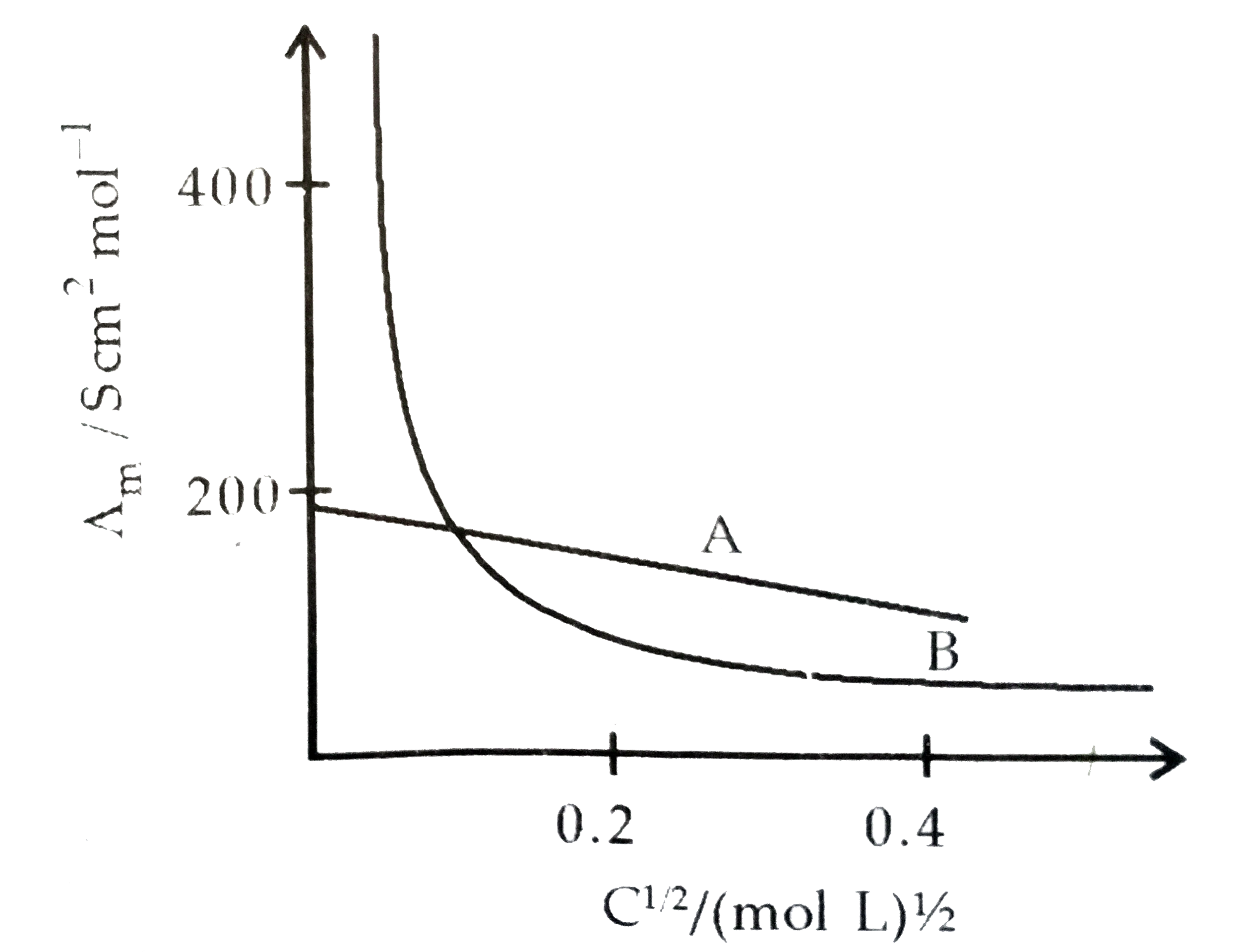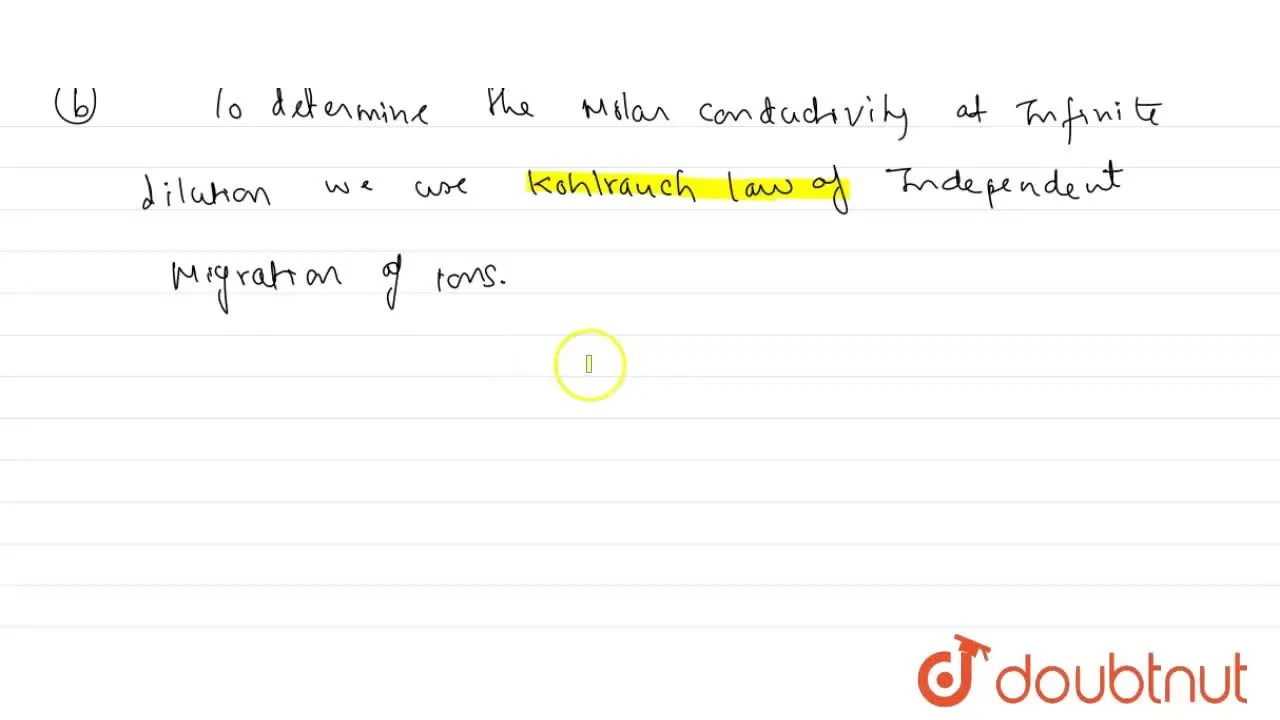The following curve is obtained when molar conductivity (∧m) is plotted against the square root of concentration, c1/2 for two electrolytes A and B
(a) How do you account for the increase in the molar conductivity of the electrolyte A on dilution.

(b) As seen from the graph, the value of limiting molar conductivity (∧0m) for electrolyte B cannot be obtained graphically. How can this value be obtained?1
Step by step video & image solution for The following curve is obtained when molar conductivity (wedge_(m)) is plotted against the square root of concentration, c^(1//2) for two electrolytes A and B (a) How do you account for the increase in the molar conductivity of the electrolyte A on dilution. (b) As seen from the graph, the value of limiting molar conductivity (wedge_(m)^(0)) for electrolyte B cannot be obtained graphically. How can this value be obtained?1 by Chemistry experts to help you in doubts & scoring excellent marks in Class 12 exams.
Similar Questions
The increase in the molar conductivity of HCl with dilution is due to
View SolutionWhat is meant by limiting molar conductivity?
View SolutionThe increase in equivalent conductivity of a weak electrolyte with dilution is due to :
View SolutionLimiting molar conductivity of NaBr is
View SolutionExplain with a graph the variation of molar conductivity of a strong electrolyte with dilution.
View SolutionResistivity is reciprocal of molar conductivity of electrolyte.
View SolutionThe molar conductivity of strong electrolyte
View SolutionHow is the unit of molar conductivity arrived ?
View SolutionHow does temperature affect the electrical conductivity of electrolytes ?
View SolutionWhat is the effect of decreasing concentration on the molar conductivity of a weak electrolyte?
View Solution


